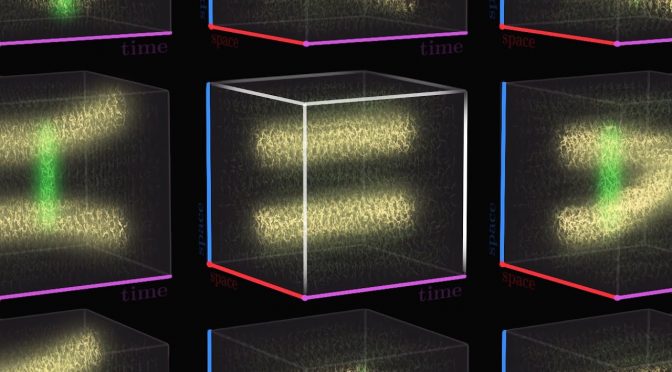Dive into the fascinating world of quantum field theory with Alessandro Roussel’s captivating video “Quantum Field Theory visualized” (narrator: Octave Masson). This educational resource breaks down the complex concepts of quantum field theory into easily digestible segments, taking you on a journey through the building blocks of our universe. From exploring the standard model of particle physics to understanding the interactions between quantum fields, Alessandro makes these topics accessible and engaging for everyone. So, whether you’re a seasoned physicist or a curious novice, this video is bound to leave you with a deeper appreciation of the underlying principles shaping our reality.
Quantum Field Theory Introduction
In this segment, the concept of quantum mechanics is introduced, highlighting that particles at the microscopic scale don’t have definite positions, but instead have a probability distribution. The limitations of quantum mechanics are discussed, such as its inability to describe situations where the number of particles varies over time and the fact that it treats each particle independently. To address these issues, a new mathematical framework is needed that reconciles quantum mechanics with special relativity, resulting in the construction of quantum field theory.
Filling the Universe with Fields and Spins
The video begins with an empty universe, consisting of space-time dimensions. To fill the universe with content, fields are introduced. In mathematics, a field is like a fluid that fills all space-time, containing a mathematical object at each point. Special relativity imposes certain restrictions, forcing us to respect symmetries that correspond to the geometry of space-time. Mathematical objects can be classified with a parameter called spin, including numbers (spin 0), vectors (spin 1), and more exotic objects called spinners (spin 1/2). These objects obey the symmetries of relativity, making them potential candidates to fill the universe.
Conserved Quantities in Space-Time
Space-time symmetries impose restrictions on the types of objects allowed and their behavior within a field. These symmetries force the field to respect the conservation of certain quantities over time, such as energy, momentum, angular momentum, and the velocity of the center of mass. Additionally, mathematical objects themselves can contain symmetries of their own. For example, a field with complex numbers exhibits an internal symmetry, which implies the conservation of electric charge over time.
Transforming Classical Fields to Quantum Fields
In quantum mechanics, classical objects are transformed into quantum objects by allowing them to adopt several positions simultaneously, with varying probabilities. To transform a classical field into a quantum field, it is allowed to adopt multiple configurations or ways it can evolve with differing importance. As the field evolves, it transitions from a classical field to a quantum field, resulting in well-defined energy levels, similar to an electron in an atom. Quantum fields can only contain integer numbers of disturbances or quanta of energy that can appear or disappear as particles. In addition, quantum fields are agitated by fluctuations, which are virtual particles that pop in and out of existence, impossible to observe directly.
The Standard Model of Particle Physics
Our model universe describes a space-time filled with a quantum field, where disturbances (particles) move within a soup of fluctuations (virtual particles). Several fields coexist in our universe, constituting different families of particles. Vector fields (spin 1) contain photons, Z and W bosons, and gluons. Fields of spinners (spin 1/2) consist of fermions, such as quarks, electrons, muons, tau particles, and neutrinos. Lastly, there is the Higgs field (spin 0). Most of these fields exhibit internal symmetries, providing conserved quantities that distinguish their particles between versions, like electric charge or color charge. The collection of all these fields is known as the standard model of particle physics.
Understanding Interactions in Quantum Field Theory
To understand interactions, we focus on the simple example of interaction between the photon field and the electron field. By allowing electrons to emit or absorb virtual photons (and vice versa), the interaction has significant consequences. In some scenarios, electrons will interact with the photon field, exchanging momentum carried by virtual particles. This results in electrons either getting closer or further apart. When we synthesize all possible scenarios, we observe the real evolution of the physical system. In our example, the electrons feel a repelling force due to the exchange of virtual photons, known as the electromagnetic force. By allowing particles to interact and exchange momentum, quantum field theory explains how forces arise from simple symmetries of the fields making up our universe.
The Power and Limitations of Quantum Field Theory
Quantum field theory offers a mathematical recipe for constructing a model universe, starting with empty space-time and filling it with quantum fields that satisfy special relativity’s symmetries. By allowing fields to interact, this theory can predict, with astounding precision, the phenomena governing our universe at the microscopic scale. However, this description is incomplete; while it satisfies special relativity, quantum field theory cannot be unified with general relativity, which describes gravitation through space-time curvature. Some results can be calculated in curved space-times, like the prediction of black hole evaporation, but scientists continue to search for a unified theory that reconciles gravity with quantum mechanics and explains why space-time gets curved – a theory of everything.

